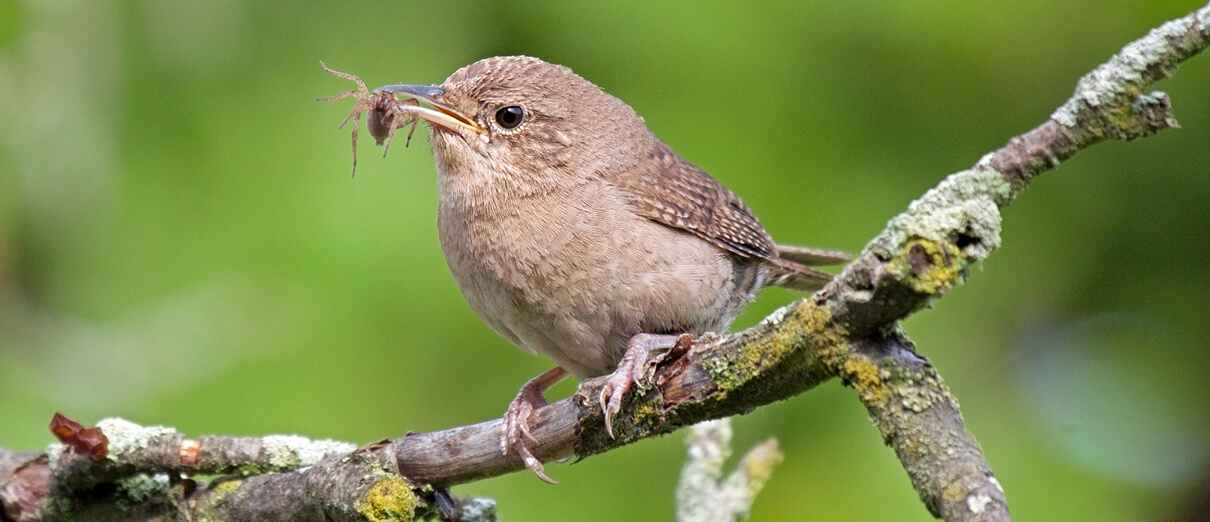What’s the Story with this House Wren
Based on the common name, the small and active House Wren is usually located near the homes of people. The name of the genus Troglodytes is “hole dweller” and is a reference to the characteristic of a mouse to move into and out of crevices as it hunts for shelter or nesting places.
A little smaller and less plain in comparison to the Carolina Wren, the House Wren is grayish-brown with slight barrings on its back, wings, and tail, as well as an elongated (not the white) eyeliner. Both genders appear similar. Similar to other wrens, the House Wren typically is seen with its tail up at an oblique angle.
House Wren House Wren, like another common backyard bird that is that of the Blue Jay, appears to be adored and hated by the human community around it.
Territorial Trials
Many birds are fierce guardians of their territories during breeding season The House Wren does this to the extreme. The tiny songbird infiltrates nests in the cavities of other species like birds like the Eastern Bluebird, Prothonotary
Warbler, Tree Swallow, and other House Wrens. They will hit (pip) eggs. They also to throw young birds from their nests, and sometimes violently scratch nestlings, and sometimes adults to the point of death. Males can also stuff cavities with twigs to stop the nesting birds out in the cavity. Texas Birds
Territorial House
Wrens can even intrude on nests in open cups of species like those of Gray Catbird and American Robin. The larger birds are known to chase House Wrens. This suggests they are aware of the danger that smaller birds pose.
While the House Wren’s abrasive behavior can be shocking for humans, however, it allows this diminutive bird to stand out in the sometimes-crissy race for nesting sites.
Outsized Song
Its loud, sparkling tune from the House Wren is larger than the singer! The Chippewa call it O-du-naa-is-sug-up-da-we’-shi, meaning “big noise for its size.” Males sing constantly when in the territory. More
Females too can be heard singing, but not so frequently. This wren also makes the characteristic loud, scolding sound.
Ladies’ Choice
Male House Wrens are the first to arrive in breeding areas first. They begin setting up their territories through singing and creating a series of “dummy” stick nests in order to attract females. When females decide to take a male as
the territory he has (female House Wrens are the ones who make the choice) the mate of her choice takes her on a trip through his nests. If she accepts the nest, she completes the nest by adding an enveloping feather hair, moss, and roots.
While they are usually monogamous, House Wren relationships can get complicated. Males may draw numerous females to build nests within his territory,
but could also be able to sneak
into the territory of males to get married to females that are nesting there. The chicks that are born in a clutch seldom share an identical genetic father.
A female House Wren might have a second brood when she has the same mate. This leaves the youngsters from her initial clutch to the male to rear. House Wrens usually have two broods in a seasonand often with various mates.
The house Wren is known
for its nesting almost everywhere including in both natural and artificial nest boxes of any kind as well as pots and planters and drainpipes, shoes, and even laundry that is left to dry.
John James Audubon, famous for his drawings depicting birds and their natural surroundings painted the House Wren family nesting in the old-fashioned manner!
Also Read

